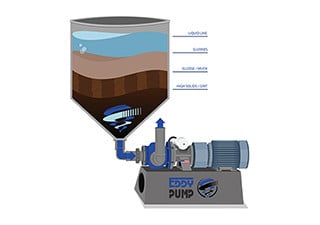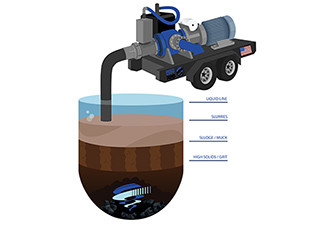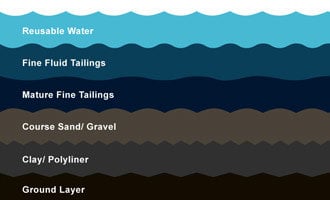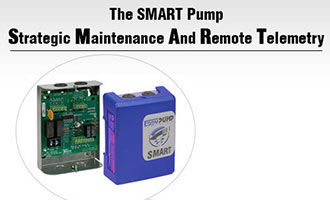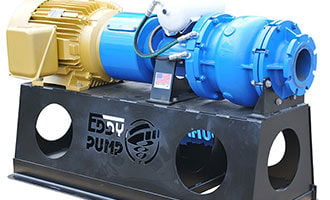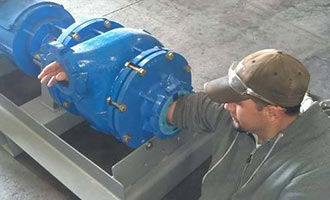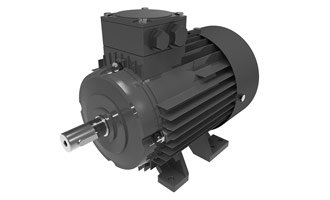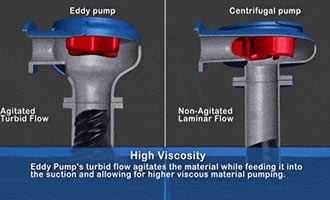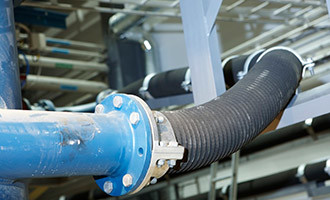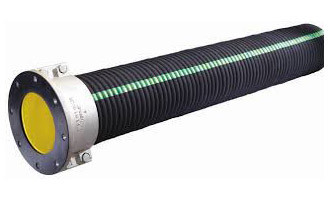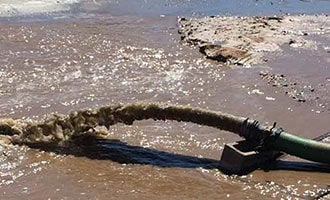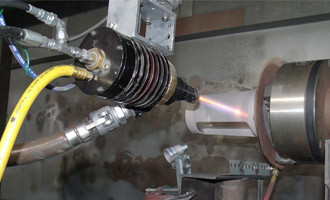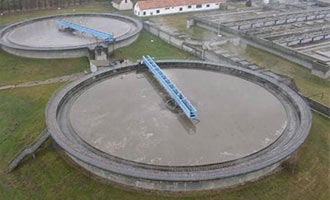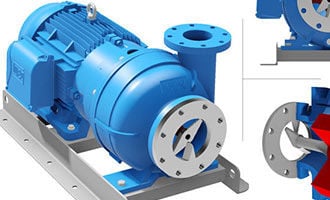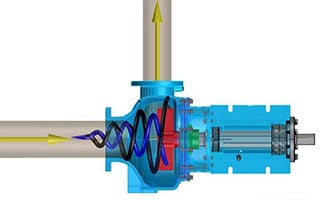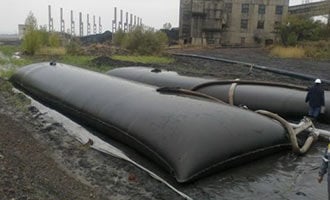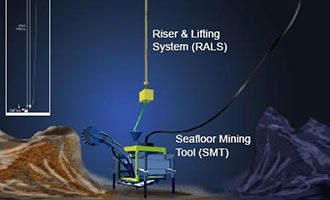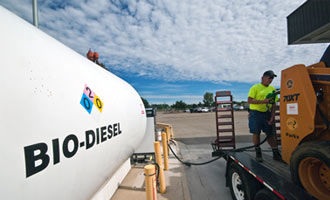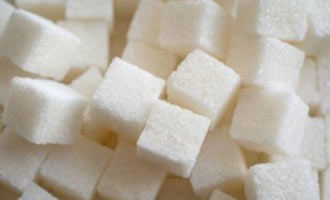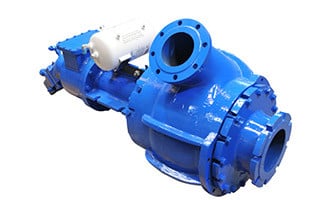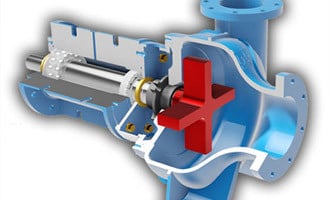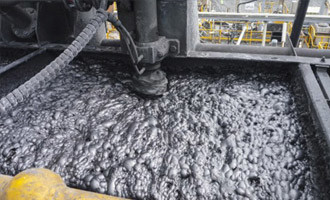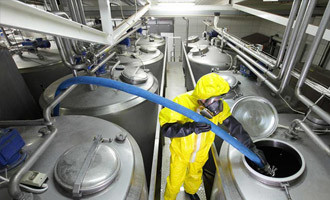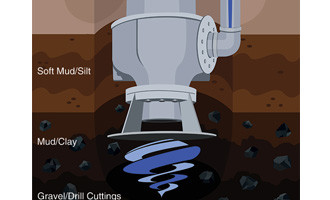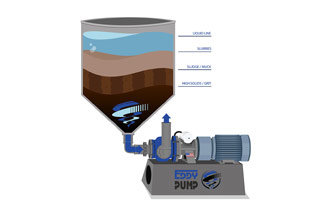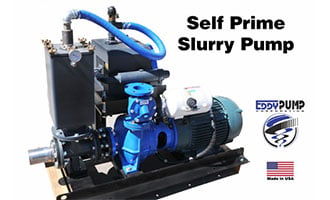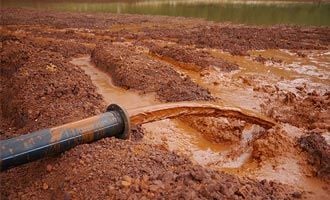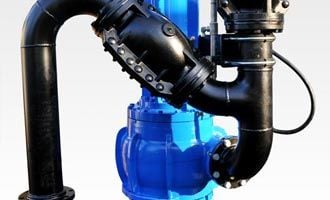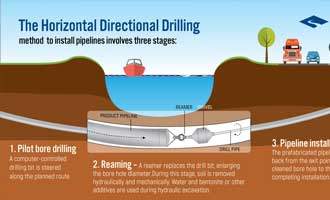EDDY Pump Self-Priming, Non Clogging Pumps
Learn how the self-priming EDDY Pump outperforms traditional centrifugal pumps. Contact Us For Fast Quote
- How Does the EDDY Pump Self-Prime
- Some Considerations When Using a Self-Priming EDDY Pump
- Net Positive Suction Head (NPSH) and Cavitation
- Common Applications for EDDY Self-Priming Pumps
- Advantages of the Self-Priming EDDY Pump
- Using Self-Priming Pumps to Replace Vacuum Trucks
- EDDY Pump is Perfect for Your Liquid Transfer Applications
How Does the EDDY Pump Self-Prime?
When someone refers to a pump being self-priming they mean that, before there is fluid running through the pump (dry), the pump draws the initial fluid into the inlet port of the pump, then pumps that fluid through the pump and downstream to its final destination.
The key to designing a self-priming pump is creating the ability for the pump to pull a vacuum at the inlet port where the fluid enters the wetted housing (volute). The vacuum at the inlet port of the pump is what draws the fluid into the pump so that the fluid can be pumped downstream.
The process of how the EDDY Pump creates a vacuum at the inlet port of the pump originates from the spinning of the rotor inside the pump. As the rotor spins it creates turbulence, which in turn creates a vortex. The vortex creates a low pressure area that, in turn, develops what is referred to as vacuum. This vacuum is what makes the EDDY Pump self-priming.
Most EDDY Pumps are submersible, as opposed to a self-priming unit in which the pump and power unit are not submerged. The suction hose attached to the inlet port of the EDDY Pump goes into the material to be pumped – the unit acts like a super-sized wet vacuum that drawings the material into the pump, and pumps the material downstream to its final destination. EDDY self-priming pumps are easily mounted to trailers or skids which allows for increased mobility, making it simple to pump out multiple large pits or sumps with the ability to easily handle solid, abrasive, or corrosive material.
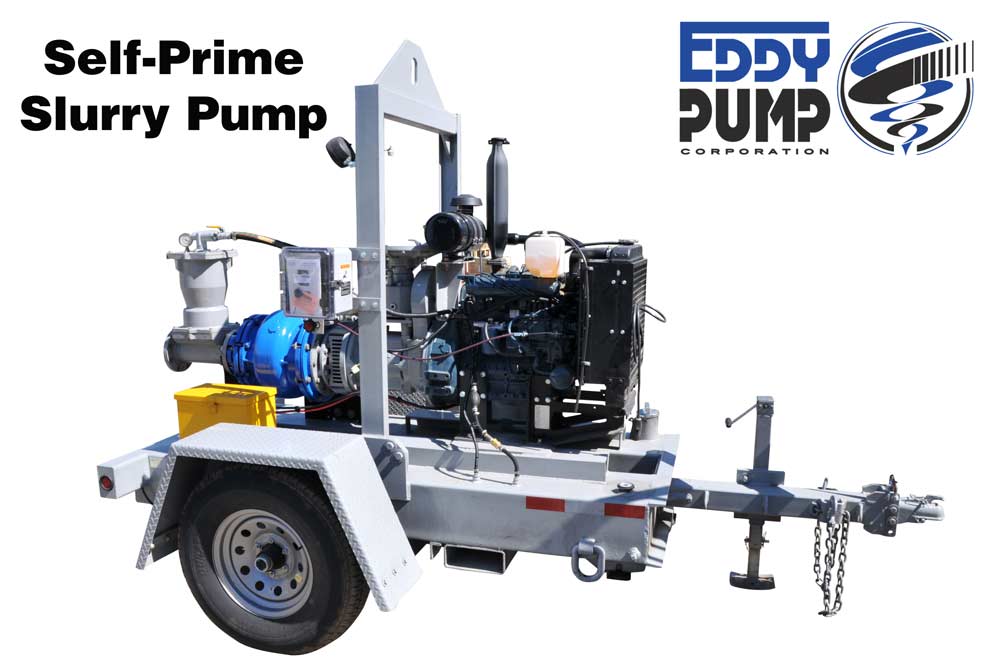

Some Considerations When Using a Self-Priming EDDY Pump
EDDY Pumps are very versatile and designed to be applied to a very broad range of pump applications. EDDY Pumps excel in extremely difficult applications, and are specifically suited for pumping slurry, high solids, extremely viscous material, paste, high abrasives (sand & gravel) and material filled with solids. Even though EDDY Pumps are used for a wide range of pump applications, there are specifics to consider when using any industrial pump.
The following are some specifics when installing an industrial pump into an application.
• Leak Prevention – Before installing check all pump fasteners to make sure they are tight. All fittings must be airtight, or the pump’s suction abilities can be reduced or lost. Test the pumping system to ensure no leaks at piping and hose connections. Even the smallest leaks can prevent the pump from doing its job correctly.
• The best location for the pump will be the shortest and straightest hook-up of the inlet and discharge piping or hose. Pump should be placed as close to the source of fluid that is to be pumped so that the pump’s suction capabilities are not hindered. The proper diameter pipe or hose, and connections should be sized properly to keep the pipe friction losses to a minimum. Piping or hose should be the same size or larger than the diameter of the pump inlet and discharge ports.
• For applications where the vacuum requirements to draw the liquid into the pump are greater than the self-priming ability of the pump, relocation of the pump could be required. In this type of situation, move the pump closer to the fluid that is to be pumped.
• If the pump must be located away from the liquid to be pumped that is greater than the self-priming ability of the pump when the pump is dry (no liquid to the pump initially), an inability to draw the fluid to the inlet port will be experienced. If this condition is experienced, an artificial means of forcing fluid to the pump could be required.
• Never use a pump in an application where chemical compatibility and/or temperature limits exceed the pump’s limitations.
Net Positive Suction Head
Net Positive Suction Head (NPSH) is an important consideration when trying to avoid cavitation. Cavitation can cause damage to the internal components of a pump (seals, rotors, bearings, etc.), and also hinder pump performance. Cavitation is a condition where the fluid entering a pump changes to a vapor. NPSHa is the absolute NPSH required at the inlet port of the pump. NPSHr is the required NPSH at the inlet port of the pump. When NPSHa is less than NPSHr cavitation will occur. Oftentimes, this is a result of the vacuum (suction) at the inlet port of the pump being too high. This condition is more common on centrifugal pumps, but can be inherent in the operation of other pumps as well. In extreme situations it can cause a pump to lose its prime, but most often causes areas in the wetted path of the pump to become void of fluid and the pump to run dry.
The following are some suggestions to avoid issues caused by cavitation and NPSH at the suction area of the pump:
• Make sure that there are no obstructions in the inlet piping of the pump which can cause an increase in vacuum.
• Use inlet piping or hoses that is equivalent or larger in diameter to the inlet of the pump.
• Shorten the inlet piping or hoses by relocating the pump closer to the fluid being pumped.
Avoiding issues due to NPSH and cavitation can reduce the cost associated with mechanical failures and hindrances of performance of the pump which can equate to greater production, less product downtime, and reduced cost in pump maintenance.
Common Applications of Eddy Self-Priming Pumps
A self-priming EDDY Pump can be used for a wide range of applications in various industries. Some examples include:
• Sewage lift stations, where raw sewage is pumped using high-solids pumps into a treatment facility.
• Pumping stormwater from a facility, construction site, or dewatering a mining operation.
• Agriculture application or Irrigation for a massive land project where a significant amount of water is required.
• Transferring light fuel from the source to the destination or holding tank for oil and gas pump applications.
• Supply lines for commercial and industrial air conditioning systems.
• Fighting fires on a large scale.
Advantages of the EDDY Pump Self-Priming Pump
Due to their unique design, there are several advantages to using a self-priming EDDY Pump. Some of the advantages include:
• Optimal Performance. Built for pumping the toughest of materials including high viscosity liquids, high-solids content slurries with a non-clogging design.
• This type of pump can remove air on its own and continue operation without assistance.
• The EDDY Pump can pump solids that are almost the size of the inlet port of the pump, no matter what size EDDY Pump.
• The EDDY Pump can be used in submersible, flooded suction, and application where the pump is positioned above the fluid to be pumped.
• The pump can self-prime without the use of vacuum assistance.
Using Self-Priming Pump to Replace Vacuum Trucks
Many industrial operations such as drilling, paper/pulp, manufacturing, and mining have waste that must be processed and removed on a regular basis. The solution for a lot of these companies is to continually hire vacuum truck services in order to clean and remove waste material from tanks, sumps, and pits. This costly process can now be done in-house for a fraction of the price with the EDDY Pump Self-Priming System.
By replacing vacuum trucks with a self-priming pump system, you can now pump waste material directly to the disposal areas, storage tanks, or dewatering bags nearby. This process can save companies hundreds of thousands of dollars per year on vacuum truck services. Geotextile Tubes, or containers made of interwoven high strength fabric, are used in many dewatering applications to separate solids from water in a solid-laden slurry. The bag’s interwoven holes allow water to pass through, leaving the solids behind for later removal. They are particularly effective for contaminated sediments dewatering and shoreline erosion control because they can be filled then stored indefinitely. It is a cost-effective means of dewatering, as no electricity is required.
A recent client in the manufacturing space was paying $200,000.00 every year to vacuum truck companies to dispose of the waste in their sumps. They tried using other pumps, but the pumps would constantly clog and fail because of large debris, abrasive slurry, etc. This problem was solved with a 2-inch self-priming EDDY Pump for a fraction of the annual cost of vacuum trucks. Dewatering bags are perfect for materials that can be dewatered and dispersed on site.
EDDY Pump Is Perfect for Your Liquid Transfer Applications
The EDDY Pump is unique compared to other industrial pumps available. This pump can do things that other pumps can’t, and in some cases, it would require multiple different types of pumps to perform under the same conditions, and pump the multitude of different types of materials that this pump can handle. The EDDY Pump is ideally suited for applications that require a tougher pump – a pump that can excel in environments where other pumps fail. This pump has been put to the test on countless occasions and has proven to be reliable, long-lasting, in service for long periods of time with little maintenance needed, and cost-effective due to reduced production downtime. The EDDY Pump is perfect for pumping fluids with high solids content and viscosity, large debris, abrasives, and corrosives. To see more about the EDDY Pump go to https://eddypump.com/ today!
NEW – Best Applications – Industries Most Served
The EDDY Pump Corporation is a premier manufacturer of pumping and dredging equipment. If you are pumping or dredging slurry, high solids, extremely viscous material, paste, high abrasives (sand & gravel) and material filled with solids, then you found the best-suited product for the job. Go to: https://eddypump.com/ or Call Us!
Mining, Fly Ash, Coal Ash, Oil, Fracking, Gas, Wastewater, Pulp and Paper, Chemical, Energy, Water Municipalities, Irrigation, and Dredging Companies. For Access to Complete Product Line Go to: https://eddypump.com/products/

Pump Deployment Options
Flooded Suction Pumps
With flooded suction pumps, the fluid to be pumped is positioned above the pump. With the pump positioned below, gravity can feed the fluid into the suction of the pump and keep the pump primed.
Submersible Pumps
Pumps that are completely submerged in the liquid are called submersible pumps. By being submerged in the fluid to be pumped, there is no need for priming.
Self-Priming Pumps
With a self-priming unit, the pump and power unit are not submerged. The suction hose goes into the slurry and the unit acts like a super-sized wet dry vacuum. Can be trailer mounted for added mobility.
Order or Get Selection Help
Related Products
HD (Heavy Duty) Slurry Pumps
Why EDDY Pumps Are Better – Highlights
This video shows how EDDY Pump transports high slurry and abrasive materials. Featured dredge pump equipment includes the Remote Operated Subdredge, Diver Operated Pump and a Excavator Attachment Dredge Pump.
Why EDDY Pumps Are Better - Highlights
This video shows how EDDY Pump transports high slurry and abrasive materials. Featured dredge pump equipment includes the Remote Operated Subdredge, Diver Operated Pump and a Excavator Attachment Dredge Pump.


